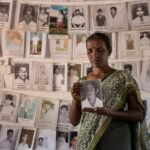
Why Srilanka Government So Scared of Media People?-
Other than in the early post-independence era governments of our country have been extremely wary of media personnel. Such was the fear of the independent press/media under the leadership of Former Premier Sirimavo Bandaranaike, her government took over the Lake House group of newspapers in the guise of board-basing that media outfit. Unfortunately, the group was turned into a mouth-piece of the regime. ‘Radio Ceylon’ and its Sinhala and Tamil counterparts being government entities posed no threat to governments. However, broadcasters did on occasion come under pressure at different times.
Expansion of the media came during Former President JR Jayawardene’s Presidency. The media enjoyed a brief period of good relations during this era. This changed however, especially during the Presidency of his successor R. Premadasa, who first tried to win over the support of the fourth state by offering them many sops.
When these measures failed, journalists faced harassment and even death; a more famous case being the assassination of journalist Richard De Soysa, during the JVP uprising of 1989. During this period, journalists were as much in danger of being killed as were the insurrectionists who criticised or exposed government excesses. However, the largest number of journalists were killed during the Presidency of Mahinda Rajapakse. At least 43 journalists and media workers were either killed or ‘disappeared’. No investigation has been pursued and no perpetrators have been brought to justice.
Among the more well-known journalists who paid the supreme price for standing up for journalistic principles were Taraki/ Sivaram– Editor of the ‘Tamilnet’ and columnist of the ‘Sunday Times’ and also Lasantha Wickrametunge – Journalist, Politician, Broadcaster and Editor of the ‘ Sunday Leader’ newspaper.
The effects of these killings and the disappearance of media personnel effectively led to self- censorship by media houses and to a muzzling of journalists themselves. Making matters even worse,today the present government is attempting to further muzzle media freedom. This time it is social media that is being targeted via the proposed ‘Online Safety Bill’; an attempt to curtail the Freedom of Expression, in online spaces.
The bill seeks to establish an Online Safety Commission, consisting of five members to be appointed and/or dismissed directly by the President. This body would have the excessive power to decide if statement made online are ‘false’ or ‘prohibited’.
The appointed of a commission answerable to the President alone makes the commission into something tantamount to bodies like ‘moral police’ who are a law unto themselves. So why our elected representatives attempting to curtail our democratic freedoms? After all, the Freedom of Expression is enshrined in our Constitution. Democracy itself resets on the four pillars of the Legislature, Judiciary, and the press. Could it be that our Parliamentary representatives believe that media is engaged in inciting violence and hatred among various sections of the society? What our lawmakers are forgetting is that reports/ articles in the media, especially on social media, are the best gauge of the people’s opinion on government successes or failures.In a similar manner, the freedom of express views on a variety of issues is the best safety valve for releasing bottled-up frustrations of the people.. It also provides a way of channeling these frustrations into non-violent action.
Rather than attempting to muzzle the media, the government would do better by correcting its faults exposed by the said media.It was not social media which brought crowds onto streets during the ‘Aragalaya’. It was the government’s failure to respond to the people’s hardships expressed via social media.






